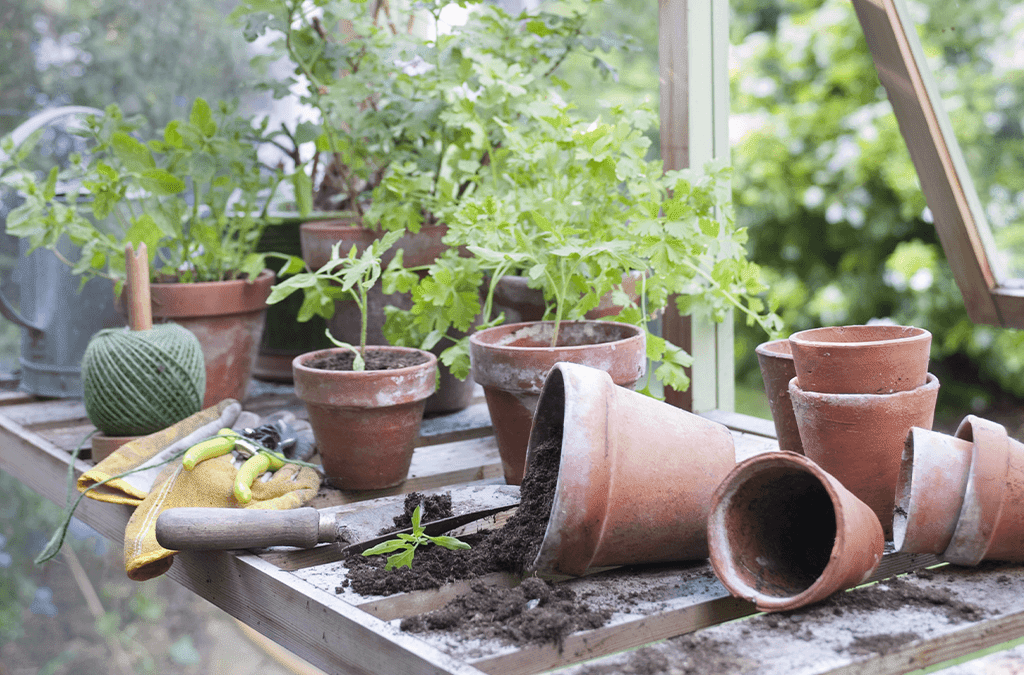Anything you leave outside is bound to get weathered, whether it’s a ceramic pot, a pair of shears, or even the leaves on a tree. While a tree can shed old leaves and grow new ones, your garden pots won’t magically renew themselves. They need to be cleaned and maintained. Here’s how to give them a bath and prep them for new plants this fall or next spring!
How to Understand Stains
Crusted on soil and dirt stains—that’s the fate of most garden pots. But what about the white mineral build-up? Ceramic pots are well-known for absorbing water. As the water evaporates, salts get left behind and caked onto the walls. And then there’s the problem of mold and mildew. All of these stubborn stains call for more than a simple hose-down.
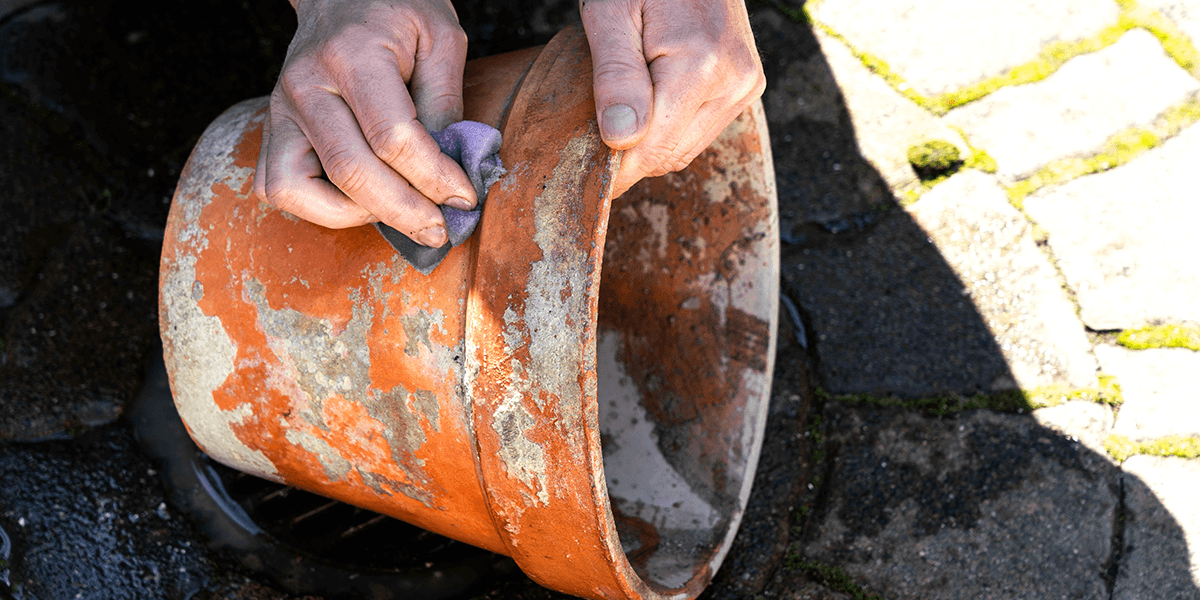
How Do You Clean Unglazed Ceramic Pots?
- Water and Vinegar: A simple water and vinegar solution remains the best way to clean a dirty garden pot. How much vinegar you use for cleaning is flexible, but aim for about 4 cups of water to 1 cup of vinegar.
- Scrub and Soak: Once you’ve brushed away excess soil, place the pots in the solution. Scrub away the stains with a stiff brush. Not coming off? Soak them for 30 minutes and try again. The vinegar will dissolve the salt and kill off any bacteria and mold.
- Rinse and Dry: After you’re done, rinse them well in plain water to remove any lingering vinegar. Let them air dry completely before storing so you don’t attract more mold.
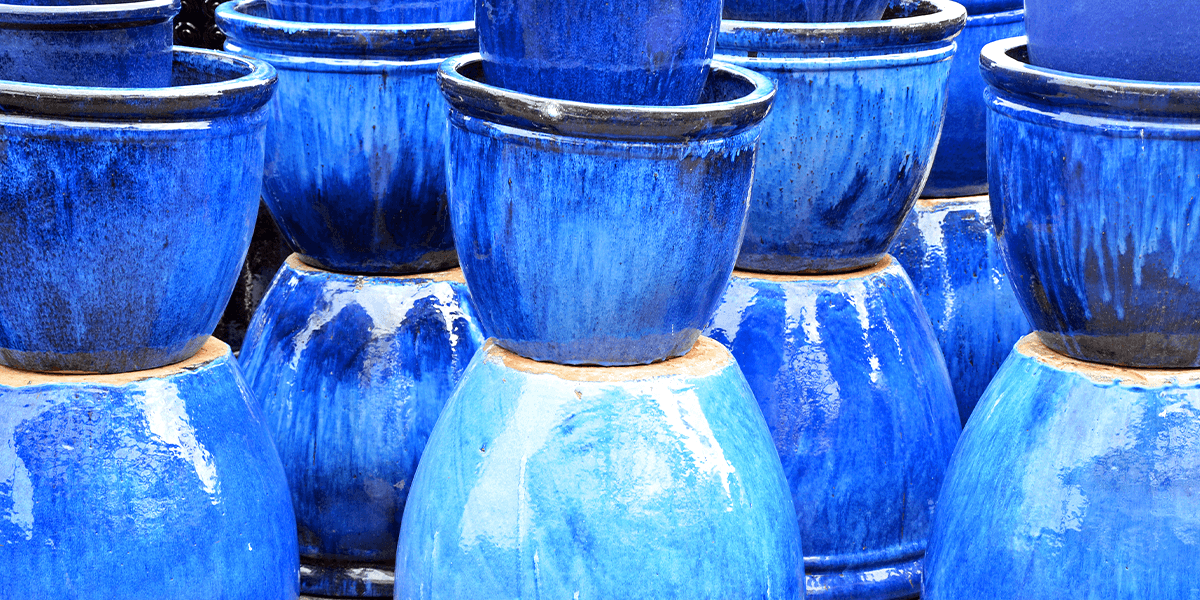
How Do You Clean Glazed Ceramic Pots?
Glazed pots are even easier to clean than unglazed ones, because the glaze prevents stains and mineral caking. If a simple hose-off is not sufficient, rinse and scrub them in a vinegar solution as described above, and dry accordingly.
How to Clean Ceramic Pots with Baking Soda
Vinegar is not the only cleaner you can use. Baking soda works just as well to neutralize and dissolve salt stains. Instead of making a solution for dunking the pots, just add enough water to make a baking soda paste. Rub the paste on the ceramic and then scrub it away with a sponge. As you rinse them off, your pots will look brand new.
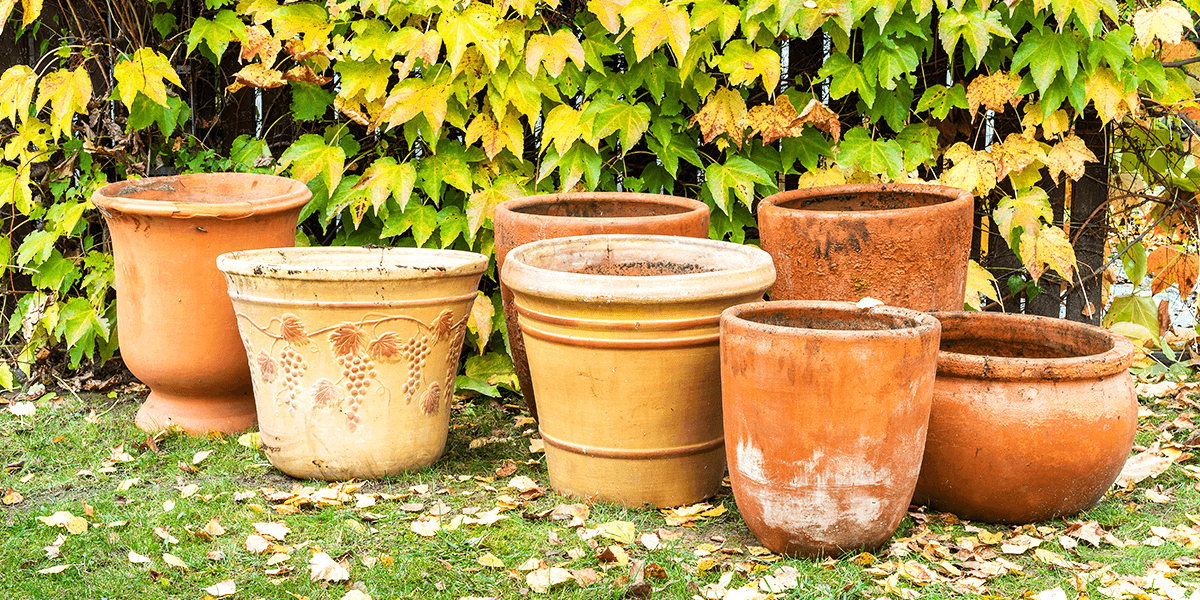
Other Tasks To Do When Cleaning Pots
When your pots are clean, it’s a good time to make any improvements to them. Are your kids looking for a new craft project? Bring out the paint and decorations. Do your pots need drainage holes? A pot with no holes is a quick recipe for root rot. Take the time to drill new holes while the pots are clean and empty—here’s how!
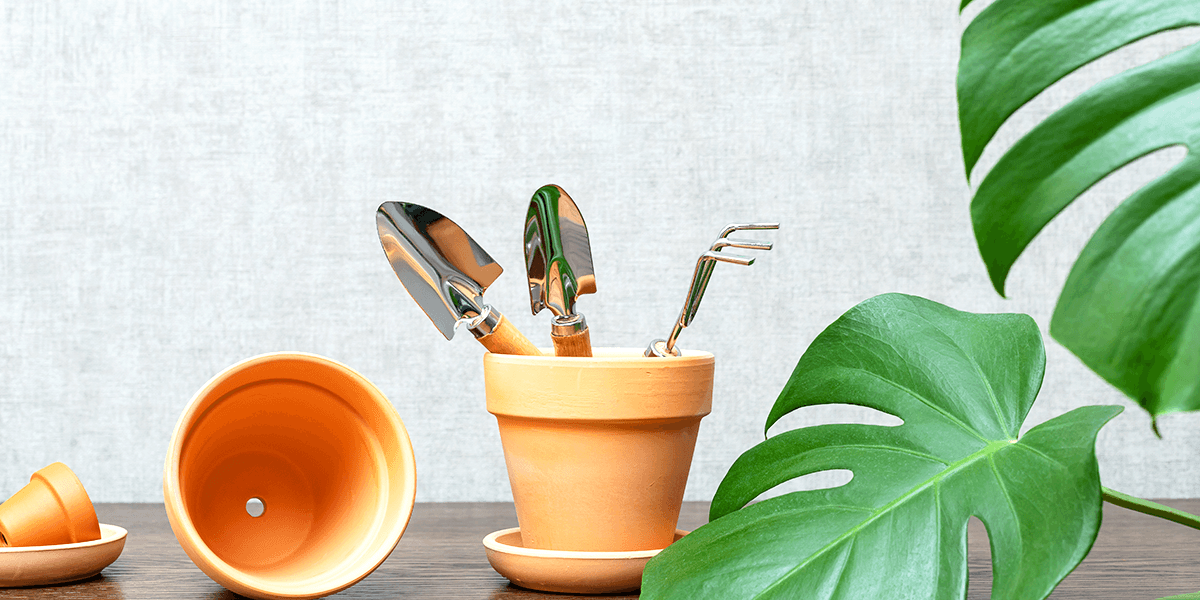
How to Drill a Hole in a Ceramic Pot?
- Use a Masonry Bit and Power Drill: We all know ceramic pots can crack easily, but how do you avoid any accidents? Make sure to use a masonry bit, designed especially for drilling through ceramics. A ½ inch bit is an appropriate size, or smaller for small pots.
- Drill At Medium Speed: Pencil in a target at the center of the base. Hold the pot firmly against a table and start drilling at a medium speed. If the bit is slipping, put a piece of masking tape over the ceramic for more traction. You’ll have a fresh new hole in no time, and your plants will be grateful for the better drainage.
As your pots get dirty, it’s easy to forget the original beauty of terracotta. You might think those stains have become a permanent part of the materials, due to the daily weathering of outdoor life in Chicago. But once you clean them, you’ll see the beautiful clay colors once again. And your plants can have a clean place to start this fall or next spring!
Platt Hill Nursery is Chicago’s premier garden center and nursery in the Chicagoland area.

